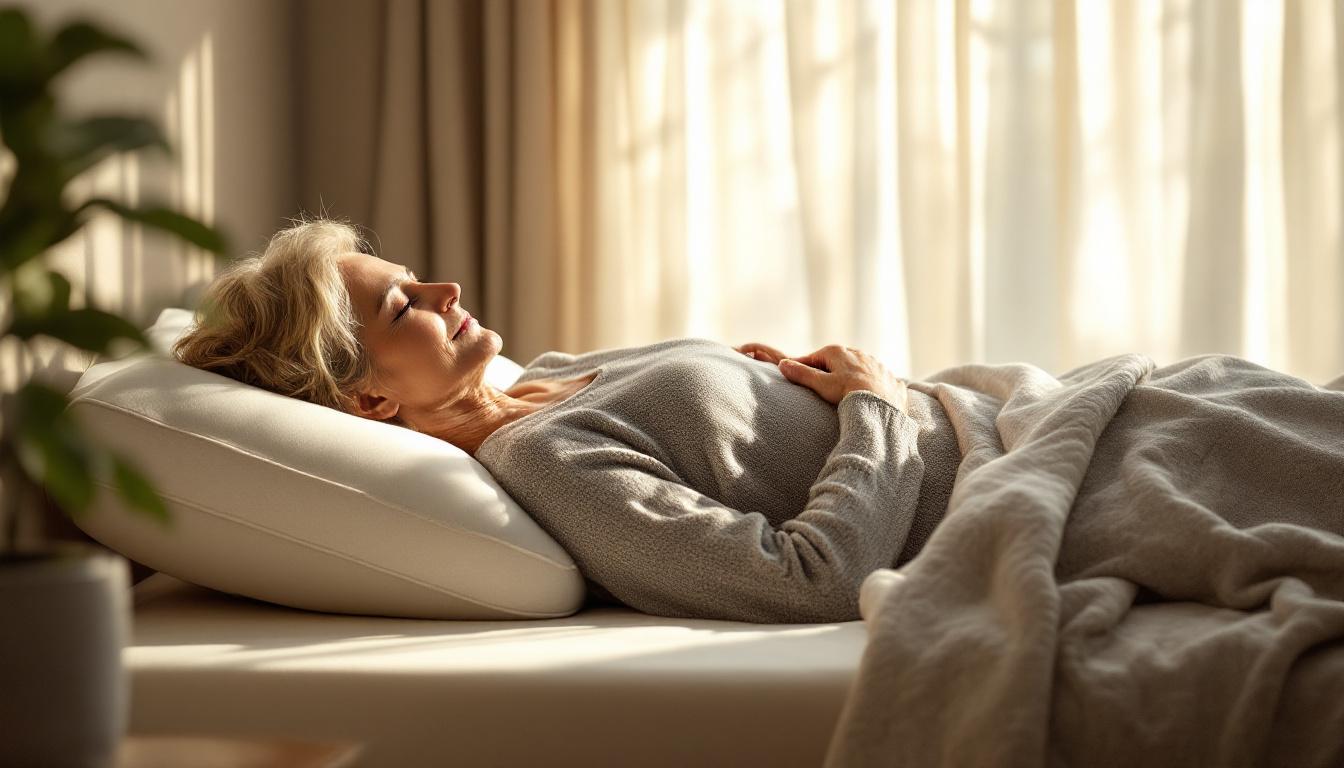Joint pain after 50 can turn bedtime into a nightly struggle. Nearly 60% of adults over age 50 report that joint discomfort disrupts their sleep, creating a vicious cycle where poor sleep actually worsens pain. The solution might be simpler than you think—changing how you position your body during those crucial eight hours.
Finding your optimal sleep position
The right sleep position can dramatically reduce joint strain and improve sleep quality. Dr. Eleanor Jenkins, rheumatologist at Austin Medical Center, explains: “The best sleeping positions maintain proper spinal alignment while taking pressure off painful joints. This allows tissues to heal and inflammation to subside overnight.”
Two positions stand out as particularly beneficial for those with joint pain:
- Back sleeping with pillow under knees (reduces lower back pressure)
- Side sleeping with pillow between knees (maintains hip alignment)
- Semi-reclined position using wedge pillows (helpful for multiple joint issues)
The worst position? Stomach sleeping forces your neck into an unnatural twist and can strain your lower back. If you’re a dedicated stomach sleeper with neck pain issues, consider gradually training yourself to sleep in a side position instead.
Customizing for specific joint problems
Different joint issues require specific modifications. For hip pain, sleeping on the unaffected side with a thick pillow between knees prevents the painful hip from bearing weight. This simple adjustment worked wonders for Marjorie Turner, 64, who struggled with hip osteoarthritis for years.
“I went from waking up 5-6 times nightly to sleeping straight through,” Marjorie shares. “My morning stiffness has decreased by at least 70%, similar to those who’ve found natural pain relief methods for other conditions.”
For shoulder pain, avoid sleeping directly on the affected shoulder and consider using a body pillow to provide full-length support when side sleeping.
The surprising connection between sleep position and inflammation
Your sleep position affects more than just comfort—it influences your body’s inflammatory response. Physical therapist Dr. Michael Chen notes: “Proper sleep alignment is like a flowing river rather than a dammed one. When joints are properly aligned, circulation improves, allowing inflammatory compounds to be cleared more efficiently.”
This circulatory benefit might explain why better sleep positions can help with conditions like hypertension. Some patients have found improvements in blood pressure readings after correcting sleep posture problems.
Creating your optimal sleep environment
Position is just one piece of the puzzle. Consider these additional elements:
- Mattress firmness (medium-firm typically works best for joint pain)
- Pillow support (should keep head aligned with spine)
- Pre-sleep routine (gentle stretching or warm bath to relax joints)
Poor posture habits during the day can undermine even the best sleeping position. Many find that addressing daytime alignment issues complements their nighttime positioning strategy.
Remember that changes in sleep position might reveal underlying issues. If you notice unusual heart rhythm patterns or breathing changes when trying new positions, consult your doctor.
Tonight, approach your bed as a healing space. Start with small adjustments—perhaps just a strategically placed pillow—and notice how your body responds. Your joints carry you through life’s journey; give them the nightly reset they deserve through thoughtful positioning. Your morning self will thank you with less pain, more energy, and a renewed relationship with your aging but resilient body.
